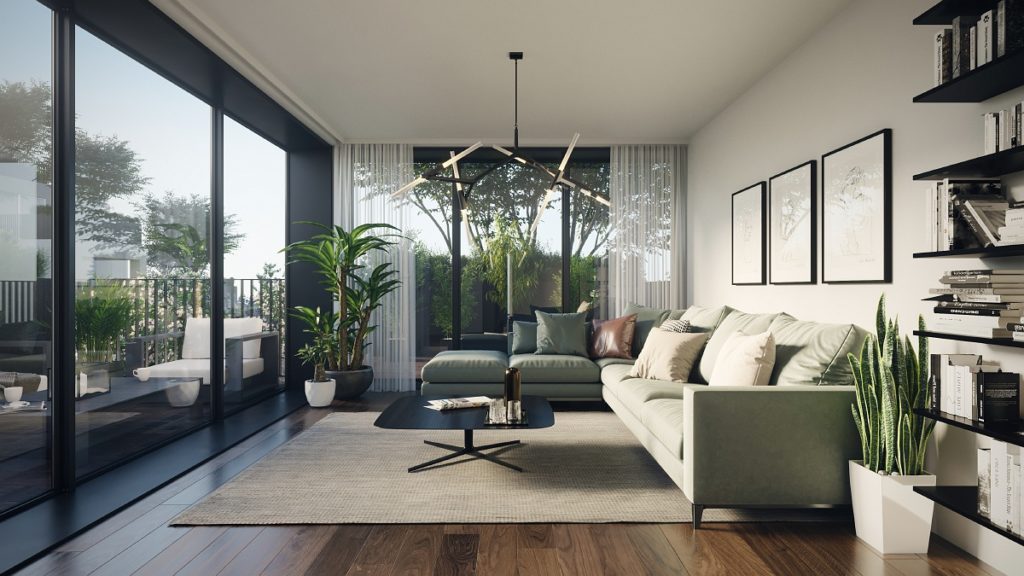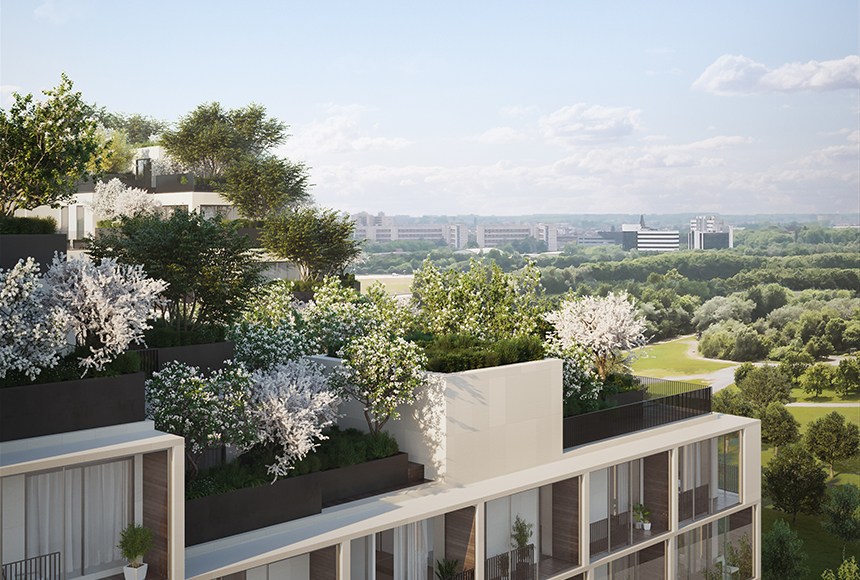A roof terrace is as old as the hills, and a roof garden no longer attracts attention, but Belgium can now boast of its first ever roof forest.
As of now, 86 fully-grown trees will wave gently in the breeze atop the Palazzo Verde in Antwerp’s Nieuw Zuid district. The trees will be joined, on the rooftops and the balconies of the housing, by 1,000 shrubs and 1,200 smaller plants.
Architect Stefano Boeri, who created the even more ambitious Bosco Verticale in Milan with some 900 trees, was in Antwerp yesterday to officially inaugurate the project, which is being managed by Triple Living.
According to them, the complex is the most sustainable housing project in the country. The trees on the roof will clean the air of five tonnes of carbon dioxide a year – not much compared to a forest on the ground, but plenty when compared to other buildings.
And Palazzo Verde (it means ‘green palace’) could be just the first of many.
The project has won the admiration of Bart Muys, professor of forest management at KU Leuven.
“People used to build a city district and afterwards they thought about the green decoration,” he told Het Nieuwsblad.
“Boeri includes the trees in his design from the start. That's the way it's supposed to be." Capturing CO2 is not the most important quality of such an urban microforest, he explained. More greenery contributes to the mental and physical health of the inhabitants. “Numerous studies have already been published on this,” he said.

A penthouse apartment, shaded by trees. © Palazzo Verde
Boeri has now turned his attention to a new project, this time in Brussels. But Prof Muys cautions that it is not possible to put woodland on just any old roof. The main issue is the need for the roof to be able to support not simply the trees, but the tonnes of soil they require. The trees need to be anchored sufficiently to withstand the sort of winds that buildings themselves experience, and they have to be irrigated.
But if Boeri has made one contribution, it should be to inspire urban architects to think more deeply about green in their work – not as an afterthought as is often the case, but as a central feature of buildings, especially those in which people live.
“It is important that we do not lose the existing urban forests and that we finish everything with an eye for greenery,” he told the paper.

